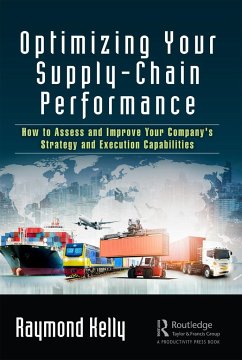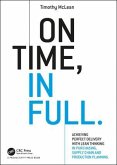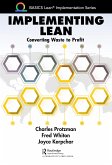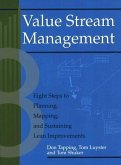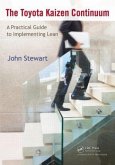Most companies are continuously trying to reduce their supply-chain costs, time to market, and inventory. Optimizing Your Supply-Chain Performance: How to Assess and Improve Your Company's Strategy and Execution Capabilities presents the "how-to's" (and a few "how-NOT-to's"!) for conducting assessments of companies' supply chains as well as identifying areas for improvement. It covers techniques, tools, and methodologies for evaluating current working methods (current state) versus industry best practices and operational optimization. It identifies performance gaps and suggests planning and implementing improved ways of working (the future and ideal states).
With a collection of approximately 40 case-in-point examples of supply-chain transformation across a wide array of industries including Fortune 1000 companies as well as foreign global leaders, this book provides a detailed guide for assessing and improving organizational strategy and execution-capabilities for:
Inventory management
Order fulfillment
Sourcing and purchasing
Manufacturing planning, scheduling, and execution
Overall supply-chain effectiveness
Business continuity planning
Essentially, this book provides basic knowledge for assessing, improving, and optimizing the end-to-end supply chain, and the case-in-point examples assist in breaking down theories into simple, actionable improvement activities. The author stresses the importance of business continuity and provides grassroots approaches to identifying risks. Based on the author's vast experience out in the field, it gives professionals a new perspective and inspires them to seek world-class performance.
With a collection of approximately 40 case-in-point examples of supply-chain transformation across a wide array of industries including Fortune 1000 companies as well as foreign global leaders, this book provides a detailed guide for assessing and improving organizational strategy and execution-capabilities for:
Inventory management
Order fulfillment
Sourcing and purchasing
Manufacturing planning, scheduling, and execution
Overall supply-chain effectiveness
Business continuity planning
Essentially, this book provides basic knowledge for assessing, improving, and optimizing the end-to-end supply chain, and the case-in-point examples assist in breaking down theories into simple, actionable improvement activities. The author stresses the importance of business continuity and provides grassroots approaches to identifying risks. Based on the author's vast experience out in the field, it gives professionals a new perspective and inspires them to seek world-class performance.

